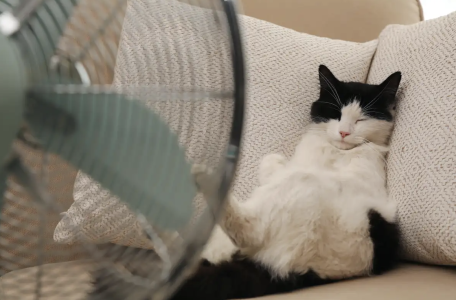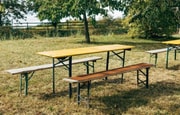SDC Rewards Member
Upgrade yours now
Top 10 Tips To Keep Cool This Summer While Protecting Your Health And Your Budget
With energy prices and temperatures both rising, keeping cool in summer is an increasingly costly challenge for many Australians. Energy bills are predicted to increase by 50% over the next two years, adding to the cost-of-living crisis. For some, this creates stark choices between paying energy bills or putting food on the table.
Many households will have to contend with high temperatures this summer, and it’s getting hotter by the year. Last summer Onslow, Western Australia, endured the highest temperature ever recorded in Australia at 50.7℃. Researchsuggests climate change will lead to summer temperatures as high as 50℃ becoming common in Sydney and Melbourne.
Australians need to take the risks of heat seriously and do what they can to keep their homes cool. As the World Health Organization points out, energy and health are inextricably linked.
So, while energy policy often focuses on managing costs and reducing energy use in the name of climate action, we should not forget the impacts of heat on health and wellbeing. Fortunately, there are things Australians can do to keep cool this summer while managing their energy bills.
So how do you keep cool on a budget?
Based on our research and the available evidence, our team has developed several resources including newsletters, videos and brochures on managing energy use while staying cool.A mix of approaches can help strike a balance between staying comfortable and keeping costs down.
Here are our top ten tips:
1. Insulate your home. Insulation is often the most practical and effective way to make a home more energy-efficient. It’s a barrier to heat gain in summer (and loss in winter). Sealing gaps around windows, doors, walls and floors can make a big difference.
2. Shade helps keep your home cool. External shading of windows can block up to 90% of unwanted heat gain. Awnings, adjustable shutters and trees (ideally deciduous so they don’t block winter sun) and vegetation around windows can help block out the summer sun.
3. Close windows, curtains and blinds during the day. Blocking the sunlight stops heat from getting into your home. Thermally insulated double-glazed or secondary-glazed windows also help, as do honeycomb/solar blinds and blackout curtains with white backing.
4. Open doors and windows when the air is cooler outside. Opening up the house at the right times helps cool it down when the building is retaining heat during a warm spell. The coolest part of the day is usually between 4am and 7am, so if you are an early riser this is a good time to open up and let cool air in. Cool breezes often occur in the late afternoon or early evening, providing another good opportunity to cool your home.
5. Stay hydrated. Hydration is important for health and wellbeing, especially during summer. If you don’t drink enough water, you can start to feel unwell including symptoms of tiredness and headaches. Women need about eight cups or 2 litres, and men need about ten cups or 2.5 litres of fluid every day. Beverages with alcohol, caffeine or sugar are not as good for keeping you hydrated – water is best!
6. Wear suitable clothing. Natural fabrics such as cotton and linen absorb sweat and allow air to circulate against your skin. These are much better than synthetics, which can leave you feeling hot and uncomfortable.
7. Personal cooling practices can help. Using a spray bottle or a wet washcloth for your face and neck can help take the edge off the heat, as can a lukewarm bath or shower. Rest, if possible, during the hottest part of the day – usually 11am-4pm. Vigorous physical activity at these times on hot days can be damaging for your health.
8. Visit cool public places. When your home gets too hot, air-conditioned sanctuaries include shopping malls, libraries, galleries and eateries.
9. Switch on fans. Fans are a cheap and effective way to keep cool. The air flow provides a similar improvement to comfort as reducing the air temperature by around 3℃. Direct the air flow to your face because the face has so many receptors on it. If the outside temperature is lower than in your home, place your fan next to an open window to draw in cool air.
10. Think twice about switching on air conditioners. An air conditionertypically uses ten times more energy than a fan. Try using a fan in combination with an air conditioner. This means you can set the air conditioner to a higher temperature in summer (add at least 3℃) and still benefit. The combined cost will be far lower than running the air conditioner alone set at a lower temperature. For efficient air conditioning, your home or room should be well sealed and well insulated, and windows should be shaded from the sun.
Keeping cool can protect your health
If, to save on energy costs, households don’t cool their homes, the consequences can be more serious than being a bit uncomfortable.Our research found energy consumption is important for families to care for children, cook and eat well, and live comfortably in the family home. We also found that for older Australians energy is vital for preventing ill health and death, managing illness or disease, supporting good mental health and sustaining social relationships. But our research shows people worry about the costs and need support to use energy to maintain their health and well-being.
Heat exposure can cause dehydration, heat exhaustion and stress. It can also worsen existing health problems such as heart and lung disease. As a result, heatwaves significantly increase hospital admissions and deaths, killing 354 people in Australia between 2000 and 2018.
Hot nights can also cause poor sleep and have harmful impacts on mental health. So, to protect your health, do what you can to keep cool this summer.
This article was first published on The Conversation, and was written by Ross Gordon, Professor, School of Advertising, Marketing & PR, Queensland University of Technology, Gordon Waitt, Professor of Geography, University of Wollongong, Theresa Harada, Research Fellow at Australian Centre for Culture, Environment, Society and Space, University of Wollongong






